How Much to Feed a Store Bought Fish
So how much fish per person do you serve at a party? As you may know, fish is a perfect food to make either for a family gathering or a Friday party. They are packed with protein and are a good source of vitamins and omega-3 fatty acids.
You may know how to make delicious meals with fish as the main ingredient. At home, you may know exactly the amount of fish that you'd like to eat. However, cooking for yourself and a whole lot of different people can be quite different.
The more people there are, the harder it is to calculate the necessary quantity of fish you need to prepare. The required amount of fish for various groups and how to cook them is what I'm about to convey to you right now in this article.
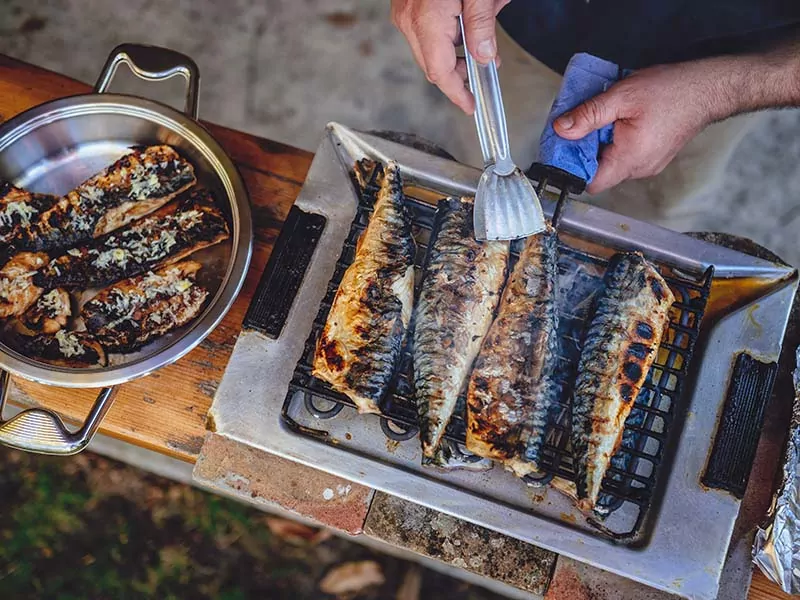
How Much Fish Is Enough For One Person?
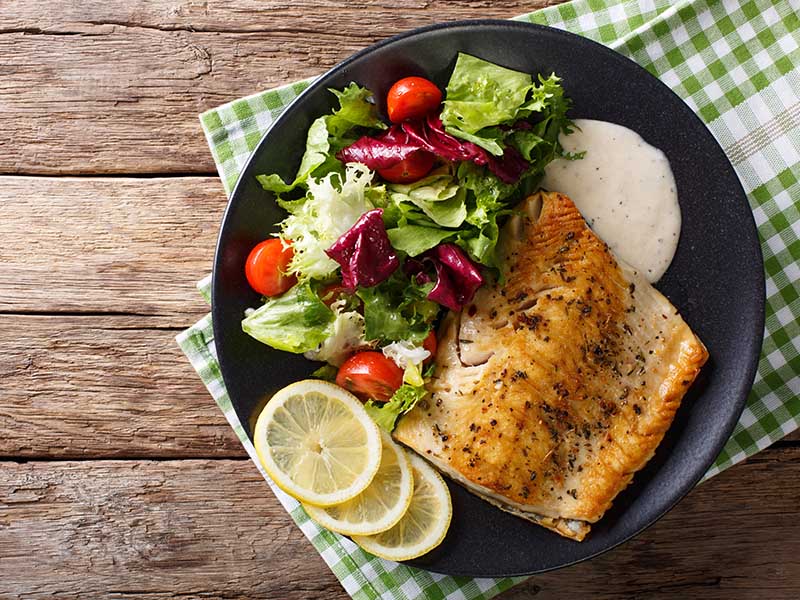
Say, you want to show off your newly acquired techniques to make smoked fish, but don't know how much you should prepare for your family. After all, nobody wants the star of the meal to run out before everyone's full, and it'd be a waste of food if there's too much leftover.
Generally, an average person will consume around 6-8 ounces of fish in one meal. The average serving is around the size of a single palm. Depending on the cooking methods, however, the same amount of raw fish can yield various portion sizes.
Fish loses about 25% of weight when cooked. So, unless you're serving raw fish, you need to factor in the weight loss carefully, especially when you're cooking for many people at once. The volume of companion foods for fish also needs to come into the equation for a balanced meal.
For cuts like steaks and filets, it is recommended to prepare 8 to 10 ounces of raw fish per person. After cooking, each portion would shrink by 2 ounces, which is the outcome you're looking for.
Then there's also dressed fish. They are fish that have had their heads, tails, fins, scales, and guts removed before cooking. You should prepare around 3/4 pound per person, which is 12 ounces of dressed fish.
If you're serving whole fish, you should prepare 1 pound for each person. The portion is much bigger because you need to take into account the inedible parts of the fish.
This clip provides some good explanations of fish portion sizes.
Recommendations For Larger Crowds
As I mentioned above, the bigger the number of people, the harder it is to calculate the necessary amount of fish you need to cook in the kitchen. Here are some common numbers serving sizes that you can take note of to prepare enough fish the next time there is a gathering.
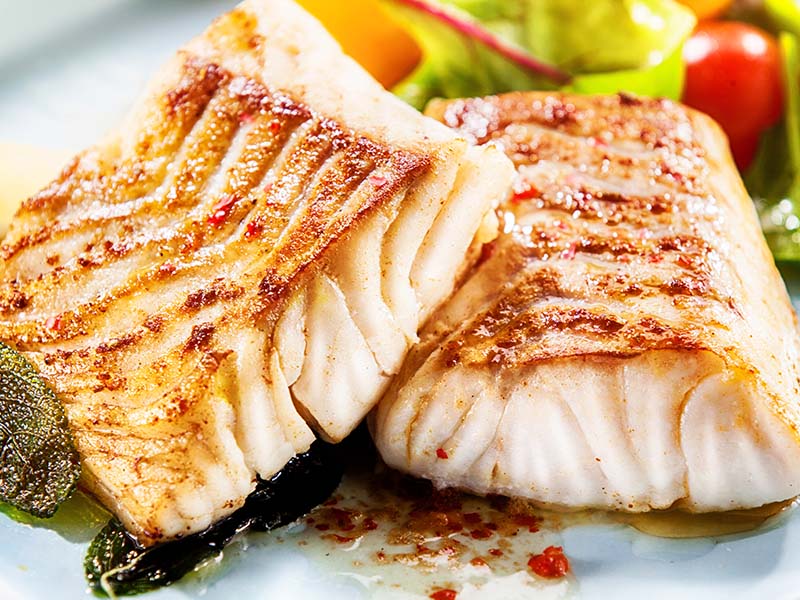
Raw Fish
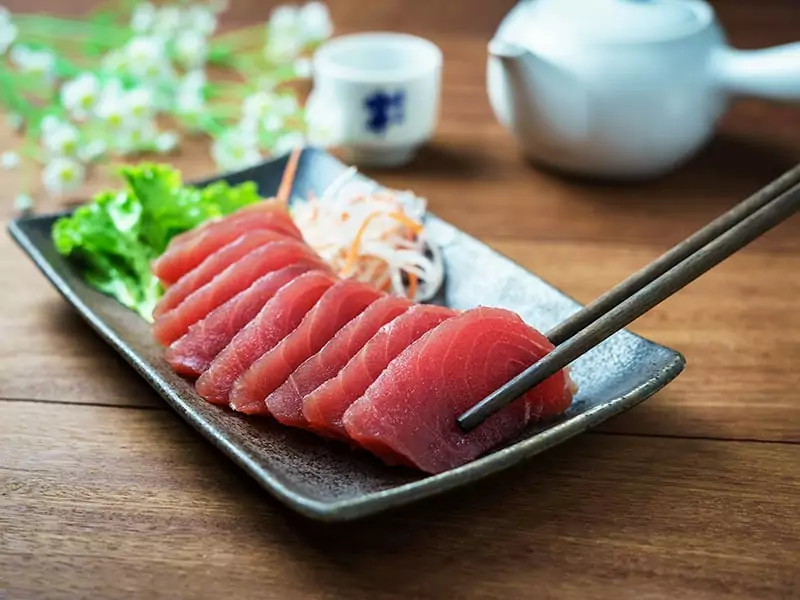
When you serve raw fish, they don't lose weight through the cooking process. For example, in the case of sashimi, you only need to cut the fish into bite-size pieces. The total weight of the fish is not reduced while it is prepared in the kitchen.
This can get slightly trickier with smoked salmon. Whether smoked salmon is categorized as cooked or raw depends on how it is prepared. In other words, for smoked salmon, you'll need to check which category it belongs to before deciding how much you need to prepare.
In this scenario, the expected yield would be the same as the amount you need to prepare, which is 6 to 8 ounces per person. Here is a summary of how much raw fish you need to prepare for specific numbers of guests:
- For 2 people: less than 1 pound
- For 4 people: 2 pounds
- For 8 people: 4 pounds
- For 16 people: 8 pounds
Fish Filets And Steaks
If you buy fish filets and steaks from the store, they are often frozen and already prepped for cooking after the correct process of defrosting fish. You are not required to remove anything from the filets and steaks while cooking.
However, once the fish shows signs of being thoroughly cooked, it means that the fish has lost some of its weight. This means that you'll need to take this into account when preparing cooked fish for dinner. So, how much cooked fish do you need to prepare for one person?
If you're fileting the fish yourself, follow this guide to know the basic procedure.
You should serve each person 1/3 to 1/2 pounds of fish. The only thing you should expect is how the fish would shrink during the cooking process. In this case, 25% of the weight would be lost, so you need to add in that amount when buying raw fish.
Since all of that weight is edible meat, you don't need to consider bones, guts, and other inedible parts. You would expect your guests to finish everything that is prepared for them.
While the answer to how much salmon an average person eats per meal is quite tricky, you can say with confidence that an average person should require 8 to 10 ounces of raw filets. Here is an estimation of how much raw filets and steak you would need for specific numbers of people:
- For 2 people: 1 pound
- For 4 people: 2 pounds
- For 8 people: 4 pounds
- For 16 people: 8 pounds
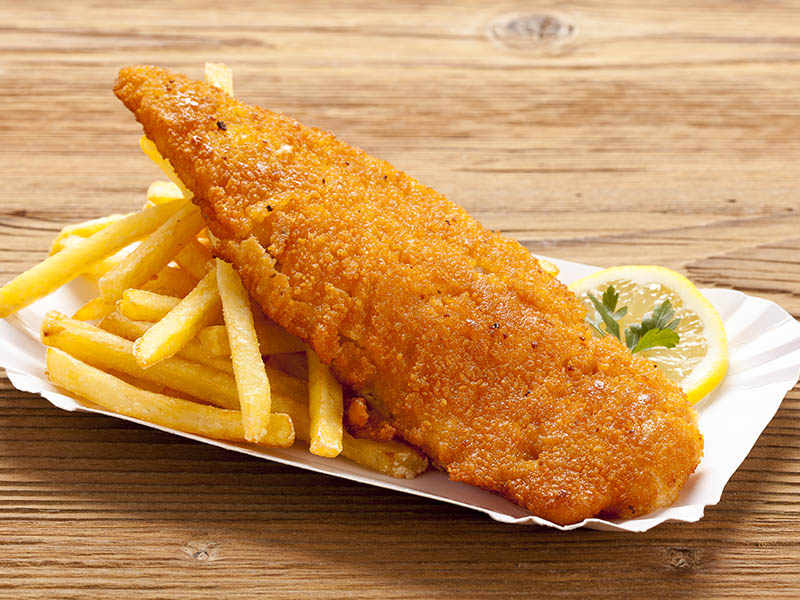
Dressed Fish
Serving dressed fish is when things begin to get complicated. Although dressed fish is prepped fish that has some parts of it removed, there are still inedible parts inside the fish. The edible portion for each fish is about 67% of the total weight.
When factoring in these variables, you would need to prepare about 1/2 pounds to 3/4 pounds of raw dressed fish per person. Here is an estimated calculation of how much raw dressed fish you would need to prepare for a gathering based on the number of participants:
- For 2 people: 1.5 pounds
- For 4 people: 3 pounds
- For 8 people: 6 pounds
- For 16 people: 12 pounds

Whole Fish
The advantage of using whole fish is that it is the cheapest form of product for fish. However, they are also fast to spoil, so you need to prepare them quickly before there are signs telling you that fish is bad. Once this happens, the only thing you can do is throw the entire fish away.
They also have the most inedible pieces that require you and your guests to remove manually. The total yield of one whole fish is expected to be around 45% of its total weight after cooking.
With that fact in mind, a normal person would require the preparation of 3/4 to 1 pound of raw whole fish in a meal. Below is a calculated estimation of how much raw whole fish you should get for various groups of people:
- For 2 people: 2 pounds
- For 4 people: 4 pounds
- For 8 people: 8 pounds
- For 16 people: 16 pounds

Some Benefits Of Fish – Should You Eat More?
Fish is one of the healthiest foods out there. It's packed with proteins, vitamins, and other essential nutrients. DHA, Omega-3 fatty acids, and vitamin D are among the most popular reasons for people to consume fish more often.
Here are some recommendations on fish and why you should eat them.
Protein
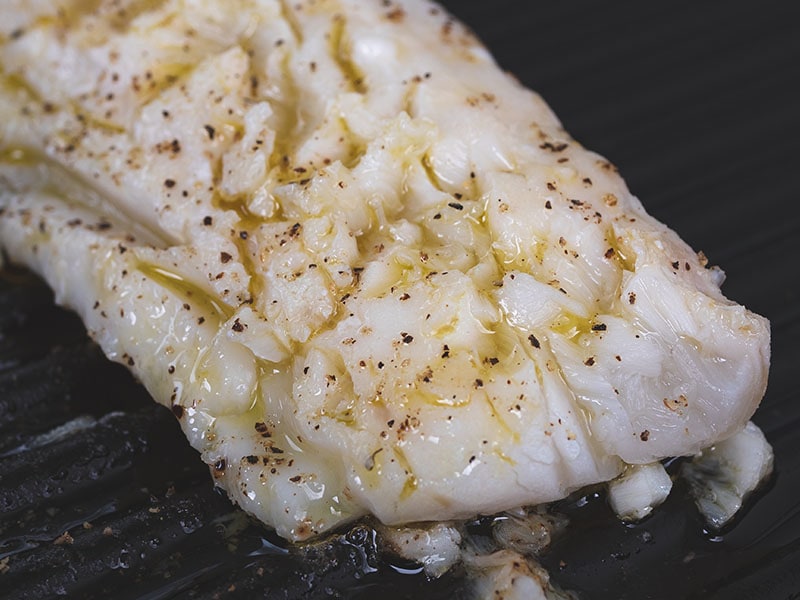
Fish is considered to be the best type of lean protein available naturally. They are low in unhealthy fat and high in protein, which is a basis for most diets.
3 ounces of fish provides around 20 grams of protein, which is about 1/3 of the recommended daily amount of protein a healthy adult should have.
Moreover, they include every type of essential amino acid. This means that fish has the potential to be a complete protein source. You can consume only fish to get your daily protein needs without the need for a varied diet.
Since fish is also much softer than other meat like beef and pork, its proteins are easier for the human stomach to digest.
When cooked, the flesh of fish turns flaky because the connective tissues are already broken down. It does not need extra cutting or slicing. For groups of people like the elderly and children who have difficulties eating properly, fish is a great boon.
Healthy Fatty Acids
Fish is low in saturated fat, which is a good thing. Saturated fat is one of the unhealthy fats that are not recommended for a healthy diet.
Most fat available in fish is unsaturated, which are healthy fats. There are also omega-3 fatty acids, a special kind of polyunsaturated fat, that are well-known for their health benefits.
These omega-3 fatty acids can aid in the normal function of the heart and lower the risks of heart diseases and obesity (1). This is why fish oil products are always sought after.
For more information on fish oil, you should see this clip.
Tips To Look Out For When Preparing Fish
When you cook fish for many people, it is best to be cautious because you would not want to accidentally poison everyone at the family dinner table or all of your guests at the Friday night party.
Fish that stay dead for a long time without proper refrigeration are full of contaminants. Here are a few tips and tricks for you to choose the right fish and prepare them correctly according to safety guidelines.
- When you prepare a large amount of fish, take them out of cold storage one batch at a time. You would not want all of them outside at room temperature. Fish left outside for 2 hours can develop bacteria that causes botulism, which can be fatal when consumed. (2)
- When buying whole fish, look at their eyes to check if they're fresh or not. Their eyes should be bright, clear, and firm, not dull and sunken inside the head.
- Scales and gills are good indicators of freshness. Fresh fish has scales that are firmly connected to the skins so that they don't fall out when you rub them against the grain. Gills should still be red in color and free of slime.
- For cuts like steaks and filets, check the texture of the flesh before you buy them. It should be firm and springy, not soft and easily punctured.
- You need to prepare whole fish quickly. Whole fish still have their guts, which is a perfect living environment for bacteria. They always need to stay under average temperature, which will limit the growth of contaminants.
- You should not buy whole fish and process them at home. It is an expensive procedure and can take up a lot of time without the right tools, which can deteriorate the fish by the time you're done.
- Filets deteriorate faster than other cuts. They have a larger surface area, which is susceptible to the development of bacteria.
- When buying filets, look for clean portions with no visible blood or any discolorations on the surface. This means that the fish is kept well from catch to freezing, with no signs of mishandling.
- Bad filets can curl up at the edges of the cuts. They also turn gray, losing the original vibrant color. For fatty fish, the fat in-between the flesh can smell rancid.
- Fresh and properly frozen fish should not exhibit any weird smell. Any fish that smells "fishy" is already dead for a while and will not make a good meal.
- Accidentally make too much fish? Make sure you know the correct way to store fish so that you can whip up new dishes from leftover fish later. Proper storage is quite essential, as failure to do will result in a dish that smells… fishy.
Follow this 101 guide when you're at the store to get fresh fish.
FAQs
After you have acquired some tips that I got regarding fish preparation, maybe you are still left with some questions. I know that, so I have compiled some of the common questions you may ask when you're trying to portion fish for your guests.
The Right Portion For Everyone
Fish is an excellent dietary source of proteins and many other nutrients like vitamins and omega-3 fatty acids. Some people may like to eat more or less than others, but I assure you that my suggestions above can satisfy all of their needs.
With all of this knowledge, I'm sure you can confidently determine how much fish a person can eat and how much fish to prepare at a gathering. Your guests should not find themselves still hungry after the sumptuous meal.
If you find this article on fish practical, leave a comment to share with me and others how you make your fish and how many people you make food for. I'm sure your story will be fascinating.
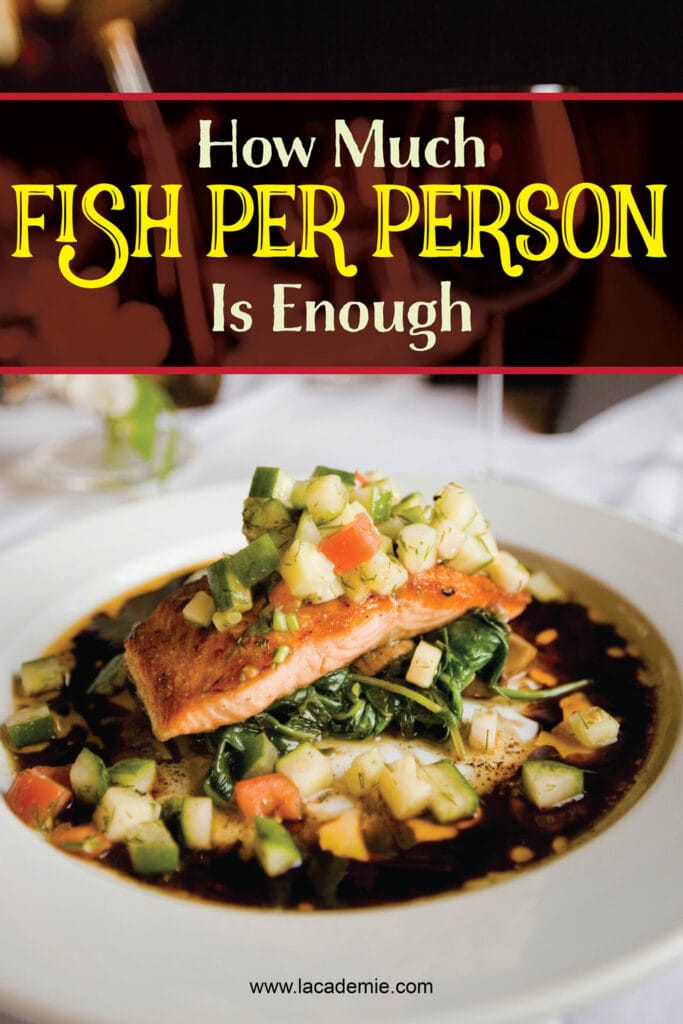
References
- Healthline. 2021. 11 Evidence-Based Health Benefits of Eating Fish.
- Health.ny.gov. 2021. About Chemicals and Bacteria in Fish and Additional Information.
Source: https://www.lacademie.com/how-much-fish-per-person/
0 Response to "How Much to Feed a Store Bought Fish"
Post a Comment